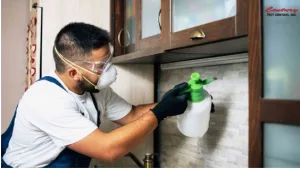
Keeping your home free from pests is essential for maintaining a healthy, safe, and comfortable living environment. Pests such as ants, roaches, termites, rodents, and mosquitoes can spread disease, damage property, and cause significant stress. Residential pest control, especially in areas like San Antonio where warm climates attract a wide range of pests, plays a crucial role in managing and preventing infestations. But how exactly does residential pest control work?
This article explains the process, techniques, and benefits of pest control to help homeowners understand how to protect their property and family from unwanted intruders.
1. Understanding Residential Pest Control
Residential pest control refers to the professional management and prevention of pests in homes. It involves a combination of strategies designed to eliminate existing pests and prevent future infestations. In San Antonio, homeowners often face issues with pests like fire ants, scorpions, roaches, and rodents due to the region’s climate and urban expansion into natural habitats.
2. Initial Inspection and Assessment
The first step in effective pest control is a comprehensive inspection of the home and surrounding property. This involves:
- Identifying the type(s) of pests present
- Locating entry points and breeding sites
- Assessing the extent of the infestation
- Evaluating environmental conditions that may attract pests
In areas like San Antonio, pest control experts often pay special attention to areas such as attics, basements, foundations, and exterior walls—common entry points for pests.
3. Integrated Pest Management (IPM) Approach
Modern residential pest control follows the principles of Integrated Pest Management (IPM). IPM is a long-term strategy that combines multiple techniques to reduce pest populations while minimizing risks to humans, pets, and the environment. This approach includes:
- Biological control: Using natural predators or beneficial organisms to control pests
- Cultural control: Modifying the environment (e.g., reducing moisture, sealing cracks) to make it less attractive to pests
- Mechanical control: Traps, barriers, and physical removal
- Chemical control: Targeted use of pesticides only when necessary, using the least toxic options available
4. Common Pest Control Methods Used in Homes
a. Chemical Treatments
These include sprays, baits, dusts, and gels designed to eliminate or repel pests. Technicians apply these substances with care, targeting specific problem areas to avoid unnecessary exposure.
b. Baiting Systems
Baits attract pests such as ants, cockroaches, or rodents. Once consumed, they carry the poison back to their nests, eliminating the colony over time.
c. Traps and Barriers
For rodents and certain insects, traps and exclusion methods (like sealing gaps) are highly effective. San Antonio homes, in particular, may benefit from sealing entry points to prevent scorpions or rats from entering.
d. Fumigation (in severe cases)
In extreme infestations, fumigation may be necessary. This involves sealing the home and filling it with a pesticide gas to kill all pests inside. It is rarely used unless absolutely necessary.
5. Preventive Measures
Once the initial infestation is under control, ongoing prevention is key to staying pest-free. Preventive pest control measures include:
- Regular inspections
- Maintaining cleanliness (especially in kitchens and bathrooms)
- Sealing cracks and openings in walls, doors, and windows
- Managing landscaping to keep vegetation away from the house
- Eliminating standing water sources to prevent mosquito breeding
In San Antonio, the dry yet warm climate can make homes especially vulnerable to seasonal pest surges, so these steps are vital year-round.
6. Safety Considerations
When dealing with pest control, safety is always a top priority. Professional services often choose methods that are:
- Safe for children and pets
- Environmentally responsible
- Compliant with local regulations
Even when using chemicals, applications are typically localized and low-risk when handled correctly. Homeowners are advised to follow post-treatment guidelines, such as ventilating rooms or avoiding contact with treated surfaces for a specified time.
7. Why Residential Pest Control Is Important in San Antonio
San Antonio’s climate, urban expansion, and proximity to natural habitats make it a hotspot for pest activity. Termites thrive in the warm, humid conditions, while ants, spiders, and rodents are often found in homes seeking food and shelter.
Proactive pest control helps prevent:
- Structural damage (especially from termites and rodents)
- Contamination of food and surfaces
- Allergies and asthma triggered by pest droppings
- Bites and stings from insects like fire ants or wasps
Regular pest control treatments are not just reactive—they’re a smart investment in your home’s long-term health and value.
Conclusion
Residential pest control is more than just eliminating visible pests—it’s about creating a long-term defense system to protect your home. From detailed inspections and integrated pest management to safe and targeted treatments, the process is designed to be effective, sustainable, and safe.
Whether you’re dealing with a minor ant problem or a serious rodent infestation, understanding how pest control works helps you make informed decisions. And in pest-prone areas like San Antonio, staying ahead of the problem can save homeowners time, money, and stress.
Information contained on this page is provided by an independent third-party content provider. Binary News Network and this Site make no warranties or representations in connection therewith. If you are affiliated with this page and would like it removed please contact [email protected]



Comments